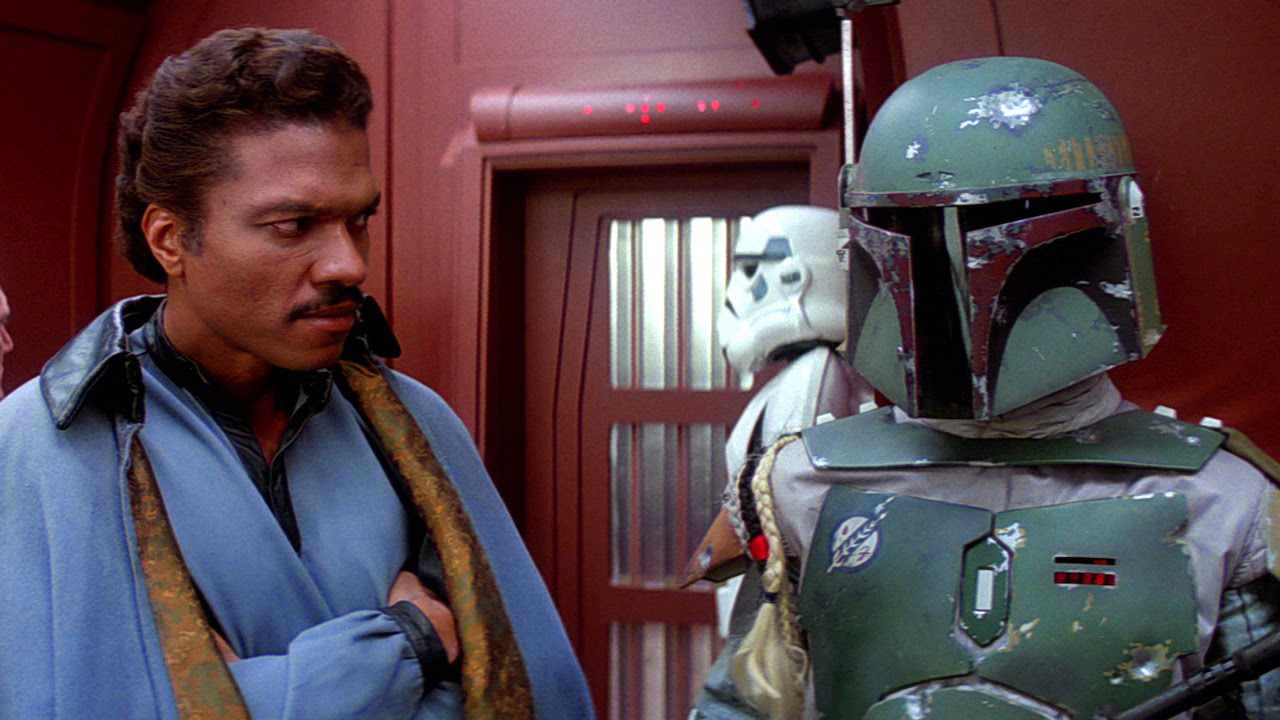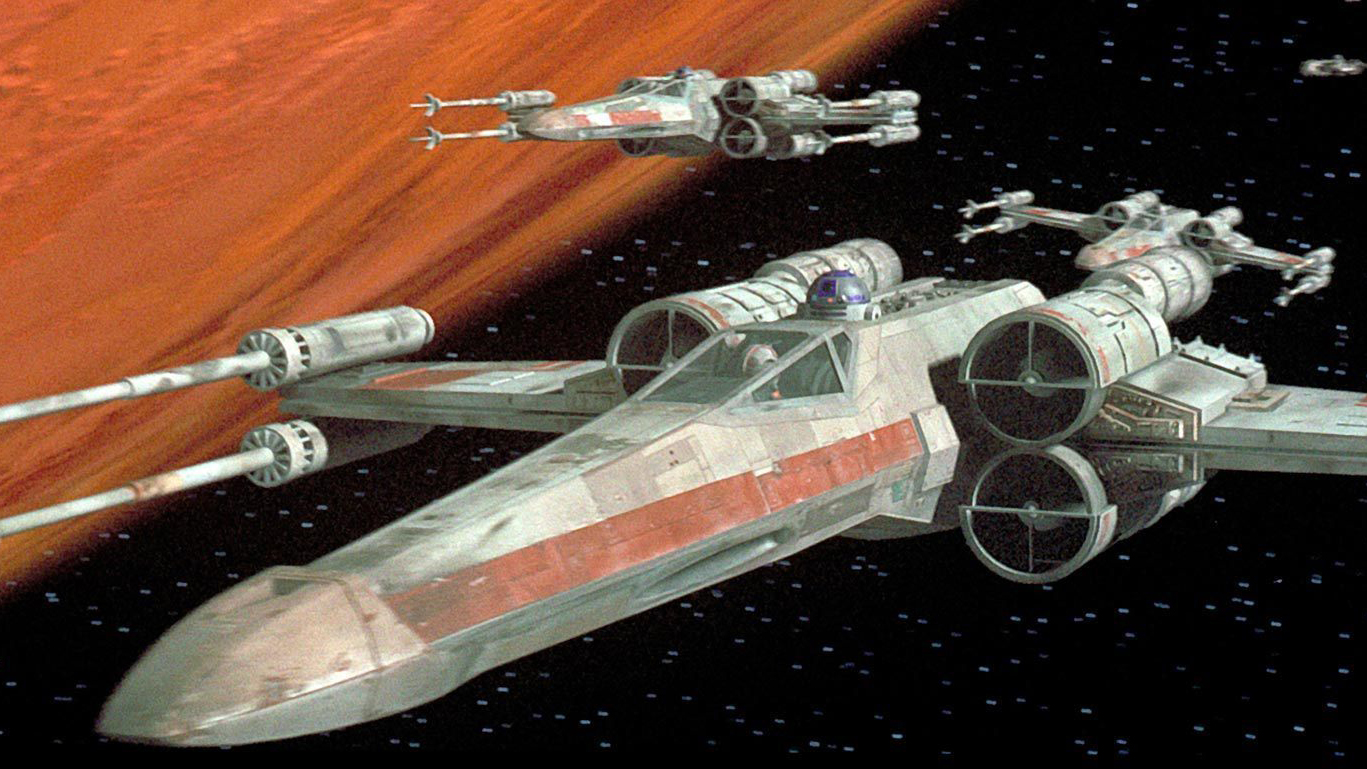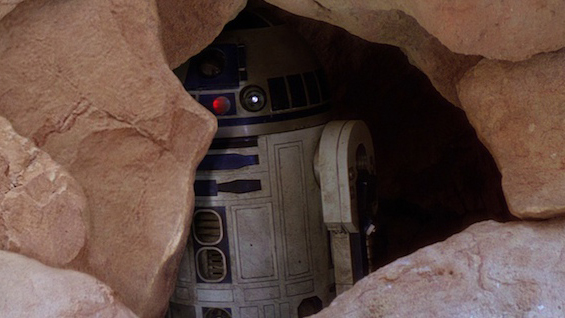Star Wars in 4K may no longer be a galaxy far, far away - here's what we want to see
Han shot first, Cloud City CG and more...

Evidence is mounting that Disney is preparing to embrace Ultra HD. The Digital Bits reports that not only is Guardians of the Galaxy Vol. 2 director James Gunn pushing hard for the company to put out its films in 4K, but that Disney is also allegedly waiting for Dolby Vision to become more widely supported before it supports the new resolution.
Of course, we’d love to see Marvel’s titles see a release in the new format, but we’d be lying if we said that there wasn’t a franchise out there that we’re much more excited about.
That franchise is, of course, Star Wars, which also just happens to be owned by Disney.
We already know that a 4K version of the movie exists, the only question is when it's going to make its way to us.
Resolution revolution
Of course the increase in resolution is only half the story when it comes to Star Wars remasters. Since the original movies were remastered in anticipation of the release of the prequels, the films have seen regular cuts and edits made to their content.
CGI segments have been added, background characters have been changed, and, most controversially of all, the Cantina scene was edited to make it appear as though Greedo shot first.
With many of these edits proving controversial among fans, a 4K remaster is the perfect opportunity to iron out the kinks, and straight up remove some of the more egregious changes.
Sign up for breaking news, reviews, opinion, top tech deals, and more.
Although there are those who’d settle for nothing less than the film’s completely returning to their original theatrical versions, we’d argue that a compromise would be a better.
Yes, we know that this might be sacrilegious amongst certain fans, but hear us out…
Fix, don’t remove, the crappy '90s CGI
When George Lucas was re-releasing the original movies in 1997 he added a couple of CGI shots to sit alongside the fantastic practical effects present in the original.
The thing is, the shots themselves aren’t a completely terrible idea. In A New Hope an extra shot was added of Red Squadron approaching the Death Star, and in Empire Strikes Back extra shots of the Milenium Falcon approaching Cloud City were added, along with plenty of CGI windows inside the city itself.
All of these shots add something to their respective films. The approach sequences work well as establishing shots and build a nice amount of tension, and the CGI windows in Cloud City make the whole sequence feel a lot less claustrophobic and give the city more character.

The only problem with these shots is that they were made at a time when CGI was in its infancy, and they sit alongside some relatively timeless practical effects.
We’d love to see these shots given a fresh coat of paint. Bring them up to the standard of the CGI seen it Rogue One and The Force Awakens and the difference in quality shouldn’t be quite as jarring.
Kill the band sequence in Return of the Jedi
From the relatively tasteful CGI additions in A New Hope and Empire Strikes Back, we turn now to Return of the Jedi, which features one of the most outrageous additional sequences.
It’s tonally out of place, adds close to nothing to the film, and… oh just watch it for yourself.
Remove the Gungan from the Naboo celebrations
This is a small one, but at the end of Return of the Jedi the special editions include a celebration sequence, where various cities throughout the galaxy are shown celebrating the collapse of the Empire at the hands of the Rebellion.
Overall the scenes aren’t half bad. We see the wider impact of Han, Luke and Leia’s mission, and we essentially get confirmation of the fact that the Rebellion are, in fact, the good guys, rather than a rogue organisation working to undermine what is otherwise a stable, functioning system of government.
But when the scene cuts to Naboo, where the streets are filled with partying... Naboos. Well, if you listen careful you can faintly hear the sound of a Gungan yelling the words, “Weesa free!”
We don’t care how it’s done, we don’t care if that Gungan has a family back home, but Disney needs to do whatever it takes to remove it from that scene.
Fix the bloody rocks
With the numerous changes that have been made to the original movies over the years, you almost get the feeling that Lucas started to run out of ideas as he switched to making smaller and smaller changes.
The perfect example is the now-infamous rocks scene in A New Hope, where Lucas digitally added a rock in front of R2D2 to hide him from the Tusken Raiders.

Sure, we can understand the thinking behind this decision. In the original shot R2 is pretty exposed, and yeah, I guess you could argue the Tusken Raiders would have seen him.
But the problem, as with many of the changes implemented by Lucas and his team, is that the solution introduces more problems than it solves. From continuity errors between the shot and those that immediately precede it, to making a crevice too small for the droid to physically fit inside in the first place, the change was simply poorly implemented.
Hide R2 behind a rock if you have to, but at least use the remaster as an opportunity to tidy it up.
HAN SHOT FIRST
We’re not going to bore you with a detailed explanation of why making Greedo shoot first in the Cantina at the beginning of A New Hope is the single most egregious change Lucas ever made to the film.
We’re not going to stress how the point of Han Solo as a character is that he starts the movie as a cold-hearted murderer whose entire point is to go through a character arc as he grows to believe in the Rebellion’s mission.
But we are going to point out just how terrible the scene looks now, with blaster shots superimposed over a scene that was never designed for them, and with Han’s head juddering weirdly to the left to avoid the shot.
For the love of god Disney, just put the shot back to the way it was before so we can forget this entire thing ever happened.

Jon Porter is the ex-Home Technology Writer for TechRadar. He has also previously written for Practical Photoshop, Trusted Reviews, Inside Higher Ed, Al Bawaba, Gizmodo UK, Genetic Literacy Project, Via Satellite, Real Homes and Plant Services Magazine, and you can now find him writing for The Verge.